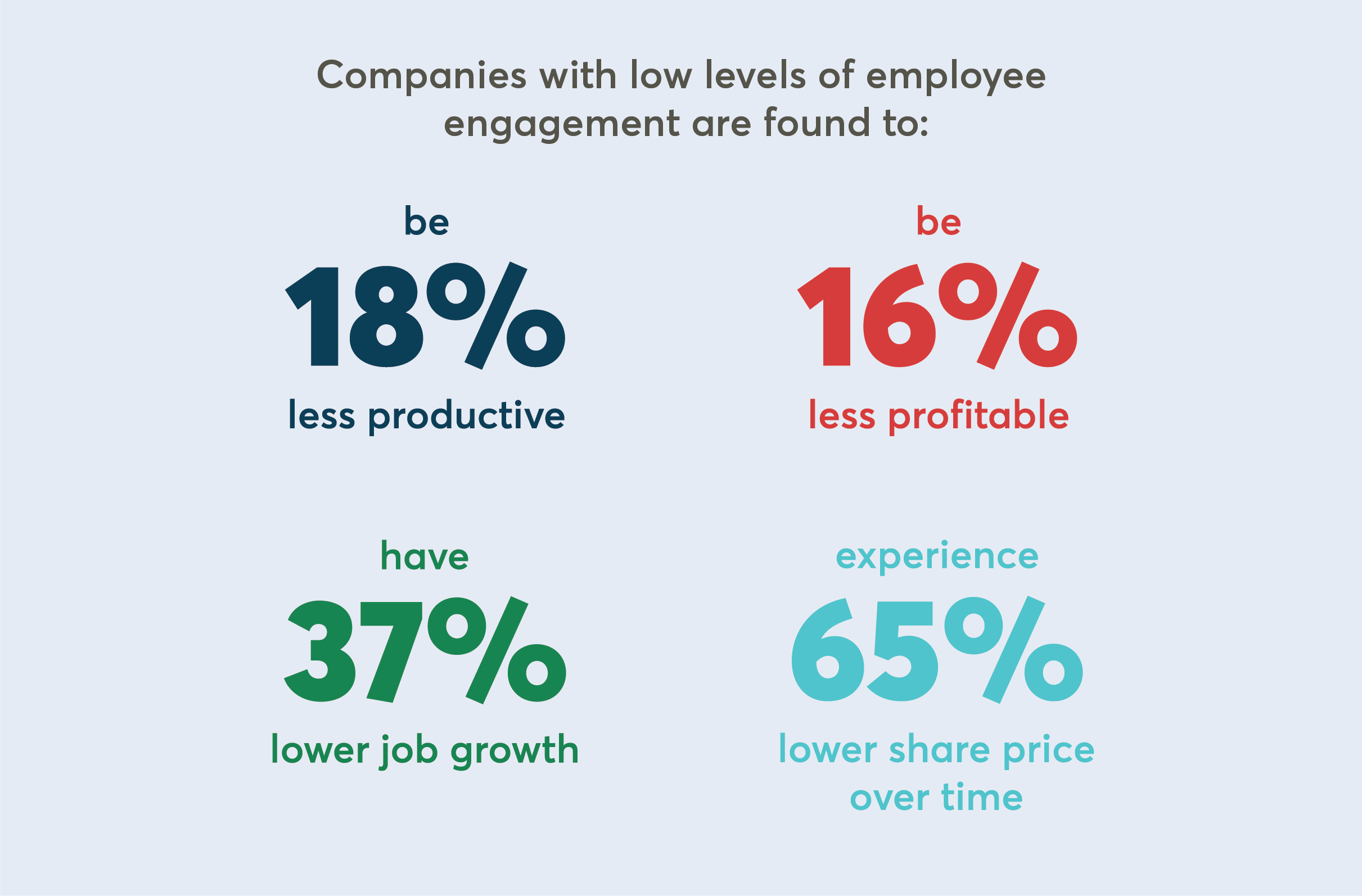For those that take a holistic approach to well-being, it is common knowledge that a positive attitude can lead to greater mental, emotional, and even physical wellness. However, the benefits don’t stop with personal health. A recent Harvard Business Review article covers the growing body of research that links a positive work culture with better employee performance, improved productivity, and lower healthcare costs.
Too often, employers—and even employees themselves—equate a high-pressure, high-stakes environment with one that enables bigger work achievements and improved employee output and performance. Unfortunately, any extra progress made through longer hours, rigid performance standards, strict managers, or an overly-competitive atmosphere might be lost due to the negative impacts of this strategy. Some of the unintended consequences of a high-pressure work culture include increased employee stress, disengagement, and a lack of loyalty.
This stress directly leads to a substantial decrease in employee health and an increased risk for problems like metabolic syndrome and cardiovascular disease; with that, comes a need for more medical interventions. The American Psychological Association estimates that 550 million workdays plus $500 billion from the US economy are lost each year due to workplace stress. High-pressure companies spend nearly 50% more on employee healthcare costs than other companies. This also contributes to performance errors and serious workplace safety issues, with stress contributing to somewhere between 60% and 80% of on-the-job accidents.
Over the long-term, these cut-throat work environments correlate to disengagement from employees. Of course, there are some people that may thrive off this kind of atmosphere and even feel more engaged by the challenge. Still, this is not something that inspires the majority of workers nor supports long-term engagement. The Queens School of Business and the Gallup Organization have conducted studies that show disengaged employees do not perform well at work. Disengaged employees have 37% higher absenteeism, 49% more accidents, and 60% more errors and defects, and companies with low levels of employee engagement were found to be 18% less productive, 16% less profitable, had 37% lower job growth, and experienced a 65% lower share price over time. On the other hand, companies with highly-engaged employees attracted more talent with 100% more job applications.

Finally, workplace stress accounts for about 50% of voluntary turnover. This creates significant costs for employers that need to recruit more often and train new employees frequently, not to mention additional decreases in productivity due to lost expertise. According to the Center for American Progress, replacing just one employee costs about 20% of that employee’s salary.
A Low-Cost Strategy With Big Rewards
One of the best features of a positive culture is that it doesn’t require a large number of resources. Meaningful interactions and compassionate leaders are crucial to fostering good coworker relationships, lowering employee stress levels, and boosting happiness and productivity.
- Value employee health and well-being—genuinely. Companies need to comprehensively support an employee’s well-being; stress and health problems have a real impact on performance and productivity. However, it isn’t just about showering employees with a long list of benefits. A Gallup poll revealed that engagement alone predicted well-being above and beyond any other material benefits. What good are fitness classes or flexible schedule options, when employees don’t feel like the people they work alongside care about or support them?
- Train managers to motivate and encourage employees. By properly training management to lead with respect, compassion, and encouragement, companies can keep incidents of job-related stress low. Studies have shown that the behavior of leaders within an organization plays a significant role in the heart health of employees. Simply working within a hierarchy is linked to an increased risk of disease and mortality. While managers and supervisors are certainly needed to keep employees on-track and accountable, they can do so with an attitude and approach that does not belittle, overwhelm, or add stress to employees.
Leaders that go the extra mile to help a frustrated or struggling employee can make a big impact on that employee’s self-esteem and outlook on work. Approach performance problems as a learning opportunity and keep communication between colleagues open; this can lead to more efficient work methods and prevent future work errors. By forgiving mistakes (within reason), encouraging growth, and acknowledging accomplishments, employees will build confidence and improve their own skills.
- Create opportunities for social connections. Fostering relationships between colleagues has faced a big challenge since the COVID-19 pandemic pushed more employees to work off-site. However, the need for social connection has only grown as social distancing guidelines have kept friends and family apart for extended periods of time. Employers can create these opportunities virtually. For example, employers can intentionally set aside time for casual and non-work conversations during video meetings or phone calls or have managers regularly check-in with off-site employees.
Especially after a stressful year of pandemic restrictions, economic struggles, health fears, and political conflicts, a positive work environment can be the key that keeps employees’ mental and emotional well-being afloat and maintains optimal productivity levels.












